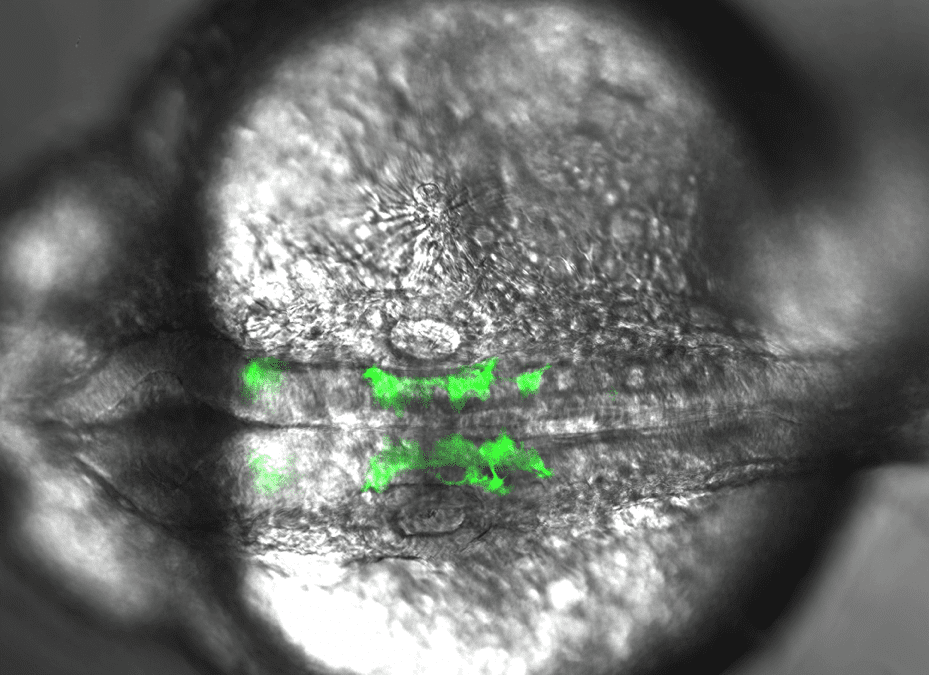On April 8th, 2024, a total solar eclipse will sweep across North America, from Mexico to the Maine-Canadian border. For those who experienced the spectacular solar eclipse of 2017, this one will be similar, crossing the United States from west to east and passing...

In the opening scene of Raiders of the Lost Ark, Indiana Jones makes a narrow escape through dense jungle while dodging a rainfall of poison darts – darts laced with lethal frog toxins. Despite the danger, it may surprise you to learn that these poisons may prove key to creating opioid alternatives.
America’s opioid epidemic is a serious national public health crisis that has intensified in recent years. Nearly 200 Americans die from opioid overdoses every day, and it costs the United States an estimated $78.5 billion in healthcare, productivity loss, and criminal justice involvement every year. This means that the development of alternative painkillers cannot be our only line of defense. Instead, a two-pronged approach that combines community engagement with scientific research recognizes both the need for immediate action and a long-term solution.
Why are we trying to replace opioids in the first place?
Opioids, which include morphine, heroin, and the prescription drug codeine, are all powerful painkillers. The problem with opioids is that while they are effective, they are also very addictive and cause 68% of all overdose-related deaths in the US. In 2016 alone, opioid overdoses in the US increased by 70%.
This means that the opioid epidemic may be running rampant in the city you call home and perhaps even in your own backyard.

Photo Credit: Laura Swain
Where do we stand in our search for alternative painkillers? Prong #1
For alternative painkillers to be successful, they must be more effective and less addictive than opioids.
A study performed in 1992 showed that a frog toxin called epibatidine was 200 times more effective at reducing pain than morphine in rats.
We also have evidence that painkillers made from this toxin would be less addictive because it works differently than opioids.
To understand how this painkiller works, we first need to make a distinction between the opioids prescribed by your doctor that come from outside your body, called exogenous opioids, and the opioids produced inside your body called endogenous opioids.
An example of an endogenous opioid is endorphins (short for endogenous morphine) that produce pain relief and a sense of well-being. In fact, the “high” which many runners feel after completing a marathon is actually an important part of the body’s attempt to alleviate pain caused by the wear and tear sustained during exercise.
Both types of opioids bind to the same opioid receptors in the brain much like how keys fit into locks. When opioids bind to pain- and reward-processing regions of the brain, they create pain relief and feelings of pleasure, respectively.
When you perform a behavior that releases endorphins, you feel pleasure, and the brain learns to repeat the behavior again and again. Exogenous opioids stimulate the brain in the same way.
Individuals who overuse opioids eventually develop tolerance, which means that with repeated use they respond less and less to the opioid over time. So, to achieve the same original “high,” individuals take a higher dose of the opioid. In doing so, they also increase their risk of overdose.
Now, back to why painkillers made from frog toxins are non-addictive.
While opioids bind to opioid receptors, frog toxins have a different target – many bind to pain-controlling nicotinic receptors (the same receptors nicotine binds to). Although nicotine is highly addictive, nonclinical studies have shown that no substantial addiction is developed to these toxins. Scientists are not sure why this is the case, but the results suggest that painkillers made from these toxins would be less addictive than opioids in humans.

So, why don’t we have alternative painkillers yet?
All the alternative painkillers made from frog toxins so far are too toxic for humans. A study conducted at Abbott Labs in the late 2000s tested one such alternative painkiller, only to find that it caused uncontrollable vomiting in people. This may mean that the painkiller targeted the wrong nicotinic receptor, one that caused people to throw up rather than one that alleviated pain.
But there is still hope.
A 2018 publication showed that a drug made from frog toxins was successful in treating adults with ADHD. Patients reported only minimal side effects. Because of this success with ADHD, the search for alternatives to opioid painkillers continues.
The search for opioid alternatives is crucial for finding a cure to America’s opioid epidemic because pain management will always be a part of healthcare.
What happens in the meantime? Prong #2
The opioid epidemic has not slowed down. In 2017, the Illinois opioid overdose death rate surpassed the national rate. For 2019, it was estimated that at least 2,000 people in Illinois would die from an opioid overdose.
Opioid addiction is not a disease that lingers in dark alleyways – it can afflict siblings, parents, and friends. Perhaps one of the biggest concerns is that even when you follow the exact dosage prescribed by your doctor, you can still become addicted. Research has shown that that the odds of addiction increase significantly after only five days of use.
So while the development of opioid alternatives continues in the lab, there is also work to be done in the community – we may yet find that simple word-of-mouth advocacy (e.g. sharing this article with friends and family) is more potent than any frog toxin!
The best way to help curb the national opioid epidemic is at the level of the community by preventing addiction from happening in the first place. A recent study showed that community support can significantly decrease the rate of relapse (by ~17%) among opioid users by increasing their sense of belonging, self-determination, and quality of life.
So, not only can we support scientists as they continue their search for alternative painkillers by making donations, we can also take immediate action by helping curb addiction in our community through advocacy.
Simple first steps include visiting Shatterproof, a national nonprofit dedicated to ending the opioid epidemic, and watching this video to learn how to administer naloxone, a life-saving medicine that reverses the effects of an opioid overdose.

Laura Swain is a 4th year student at the University of Chicago majoring in Biology with a specialization in Global Health. She is currently applying to medical school and intends to work in the medical communications sector during her gap year.






